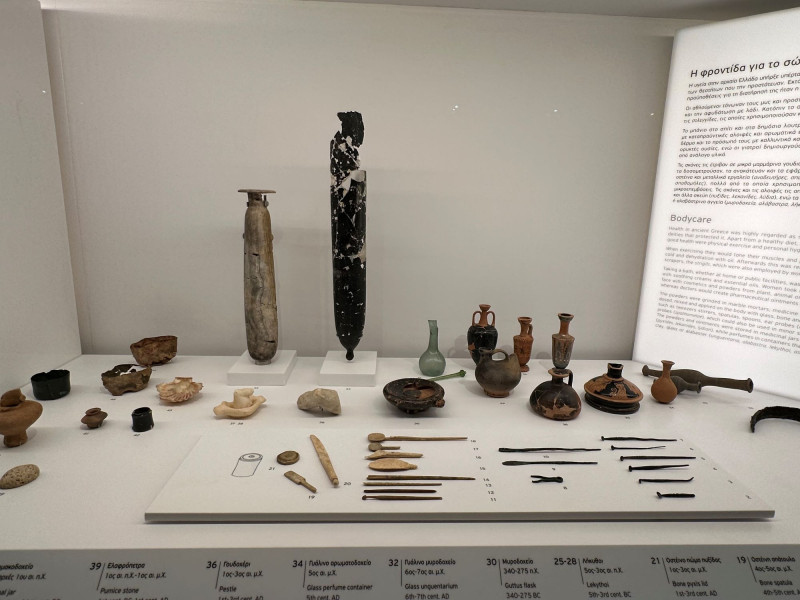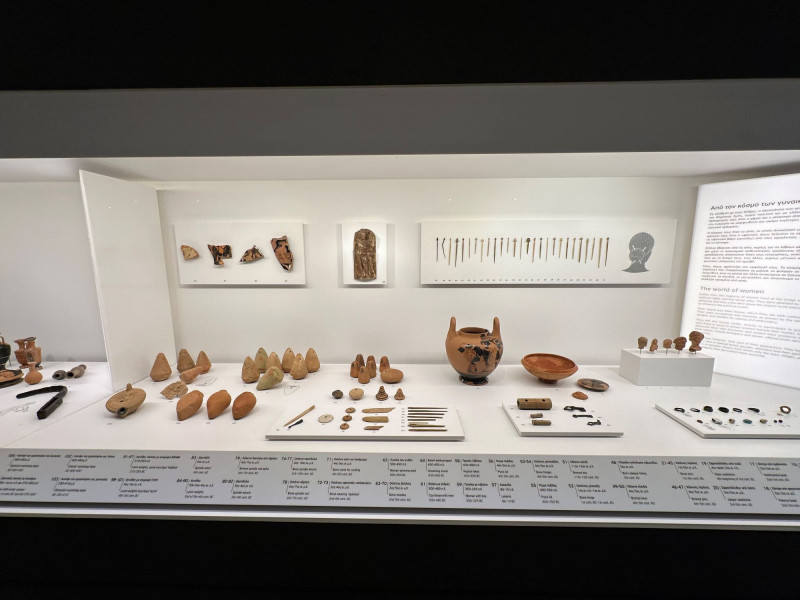“With the establishment, construction and, above all, the operation of the Acropolis Museum, our country destroyed the only – in the past – true and strong argument of the British, that Greece did not have suitable and worthy hospitality infrastructure”, said the Minister of Culture
In the spirit of its 15th anniversary Acropolis Museum and its extremely successful journey, the official presentation to the Greek and international public of the new and particularly important museum space, which completes the Museum, took place in front of the President of the Republic.
It’s about “Museum under the Museum”, which offers visitors the significantly improved possibility of understanding and interpreting the material remains and the history of an entire neighborhood of ancient Athens, which was discovered during the systematic excavations carried out in the area for the construction of the Museum and the “Acropolis” Station of Athens Metro.
The Minister of Culture Lina Mendoni, expressed, in her greeting, her joy and pride for those who contributed decisively not only to the creation and reconstruction of the Acropolis Museum, but also as a Cultural Organization of international prestige and scope, which is counted, worldwide, among the leading and most popular of its kind, fully winning the recognition of experts and the admiration of its hundreds of thousands of visitors annually.
Then Lina Mendoni referred in detail to the claim for the reunification of the Parthenon Sculptures: “With the establishment, construction, and above all the operation of the Acropolis Museum”, she said, “our country demolished the only – in the past – true and powerful argument of the British, that Greece did not have suitable and worthy hospitality infrastructures.
It is now widely – almost universally, and internationally accepted – that Greece bases its argument for the reunification of the Sculptors, on tangible evidence of its strong will and practical
of its ability and ability to protect, preserve, highlight and manage them in a perfect scientific and technical way. For decades, we have been implementing an exemplary and standard maintenance project,
restoration and restoration of all the monuments of the Acropolis, including the Parthenon. 15 years on, it is abundantly clear that the British Museum’s argument is not only invalid, but on the contrary, following the revelations of recent years, it has now been completely reversedi. In addition to the excellence of the infrastructure and the operation of the Acropolis Museum, its organic connection with the Rock and the monuments of the Acropolis, its symbiotic relationship with the modern and the ancient, the superstructure and the substructure and the urban landscape with the historical present and past of Athens, make it ideal to welcome and host the whole of the Parthenon Sculptures as a single and indivisible unit. This Museum constitutes the optimal physical and conceptual framework for the highlighting, interpretation and understanding of his masterpieces”.
The excavation area, in the architectural proposal of Bernard Tsoumi and Michalis Fotiadis, was treated as an exhibition extension of the Museum, as its physical and conceptual continuation and umbilical cord, which connects the new
building with space and time.
Five years ago, the excavation became accessible to visitors, who gained the ability, beyond it
guided tour of the Museum’s halls, to also browse the underlying antiquities.
“At this point, said Lina Mendoni, I have the moral duty to remember personally and publicly, the struggle of Dimitris Pandermalis for the construction of the Museum, for the excellent arrangement of the excavation findings, for the
defense of the overall project, against every form and color of populism, which did not hesitate to instrumentalize the excavation. The establishment and exemplary operation of this Museum, today’s exhibition of mobile finds in
the site of the excavation, the whole project as a whole, is the mouth-watering answer to all these, the so-called lovers of monuments, but in fact to the vulgar populism, which even today passes itself into similar
cases. In the 5.5 acres of excavated space, 5.4 sq.m. were deconstructed. to establish the Museum building. Dimitris Pandermalis and I – as Secretary General of the Ministry of Foreign Affairs and President of the KAS – crossed the threshold of the investigator 109 times”.
The neighborhood, below the Museum, built at the end of the slopes of the southern slope of the Acropolis rock, hosted, almost uninterruptedly, the life and activities of the city’s inhabitants from the 4th millennium BC until the 12th century.
A.D. Streets, houses, baths, workshops, shops, cemeteries coexisted or succeeded each other over time in the wider area. For this region, Thucydides – in his second book – referring to
history of Athens, tells that it is one of the oldest in the city and with some of its oldest and most sacred sanctuaries. Until it was deserted and abandoned, at a time when Athens as a whole was declining and
was shrinking.
“Here, in this area, the minister pointed out, a complex and extremely interesting, historically and archaeologically, palimpsest of uses and buildings was created, representative of the life of the poor popular strata, but
and of the social and intellectual elite of successive periods. Today, the permanent exhibition of more than 1100 mobile findings from the excavations, the “Museum under the Museum”, completes the image of the ancient
neighborhood. Located on the southern edges of the archaeological site, it fits harmoniously into the visitor’s route, contributing to a better understanding of the daily life of the people who lived here for longer
from 4,500 years”.
In closing, Lina Mendoni thanked both the General Director Nikos Stampolidis and the staff of the Museum, “because the Museum is not its shell and infrastructure but primarily its people, who founded and created it, first of all the late friend Dimitris Pandermal. The exhibition being inaugurated is a tribute to his memory.” He also thanked the Governor of the Bank of Greece, Giannis Stournaras, for his generous sponsorship, with which the “Museum under the Museum” exhibition was financed.
Source :Skai
I am Frederick Tuttle, who works in 247 News Agency as an author and mostly cover entertainment news. I have worked in this industry for 10 years and have gained a lot of experience. I am a very hard worker and always strive to get the best out of my work. I am also very passionate about my work and always try to keep up with the latest news and trends.












